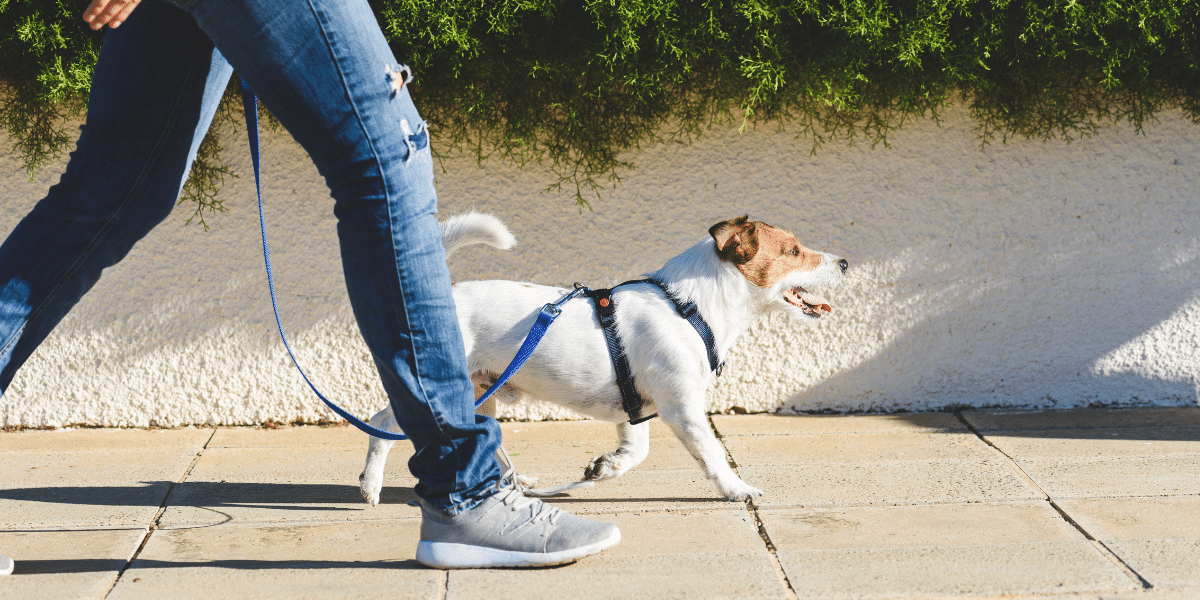Beautiful, “sunny and 75” weather may seem like a great time to take your dog out for a stroll, but it is important to be mindful of their paws. The paws of dogs and cats have sensitive pads that are vulnerable to heat. In the summer, certain surfaces like pavement and asphalt, and even astro-turf and other artificial grasses, can get extremely hot and cause blisters or burns to their sensitive paws. Not to mention that your pet is lower to the ground than you and is closer to these hot surfaces, which can raise their body temperature and put them at risk for heatstroke and dehydration.
Some simple things to consider:
- Check the temperature of the surface first – Touch your hand or bare feet to the surface. If it’s too hot for you, then it’s probably too hot for them too.
- Try to time your walks for cooler temperatures – Aim to walk your pet during the early morning or late evening when temperatures are lower, and avoid the hottest parts of the day like midday or early afternoon.
- For midday walks, make it short and keep it shady – If you do decide to walk your pet during the hotter periods, try to choose a route that is shaded from the sun and has adequate grass which will help you stick to cooler surfaces and be aware of the length of the walk.
- Just avoid asphalt – Dogs enjoy grassy areas like in parks and dog parks or hiking trails more than pavement, so it is usually best to walk them in “natural” areas.
- Dog booties are an option – If you think you may encounter hot surfaces on your walk, you can get some dog booties to outfit them with, for some added protection and style!
- Bring water – If you are hoping for a longer excursion out and about, pack some water with you. This will allow you to keep your pet hydrated, and also use the water to cool down their feet or surfaces if need be.
- Some signs of burns on your pet’s feet
- Damage or burns on paw pads – If you notice the pain or discomfort in your pet, take a look at their feet. Is there a noticeably darker color, such as red instead of the typical pink? More severe burn will show with blisters, ruptured blisters, or redness, or parts of the pad may be missing.
- They seem to be in pain or are showing signs of discomfort – If your pet is holding up a foot, limping, vocalizing, licking or chewing at the feet or is not wanting to walk
Steps to take for burns:
- Move indoors or to a cool, safe place immediately – If your pet has burns on their feet it is likely best and quickest to carry them.
- Rinse the areas with cold water.
- Avoid letting your dog lick the injury.
- Call us at Campbell Veterinary Hospital for treatment




